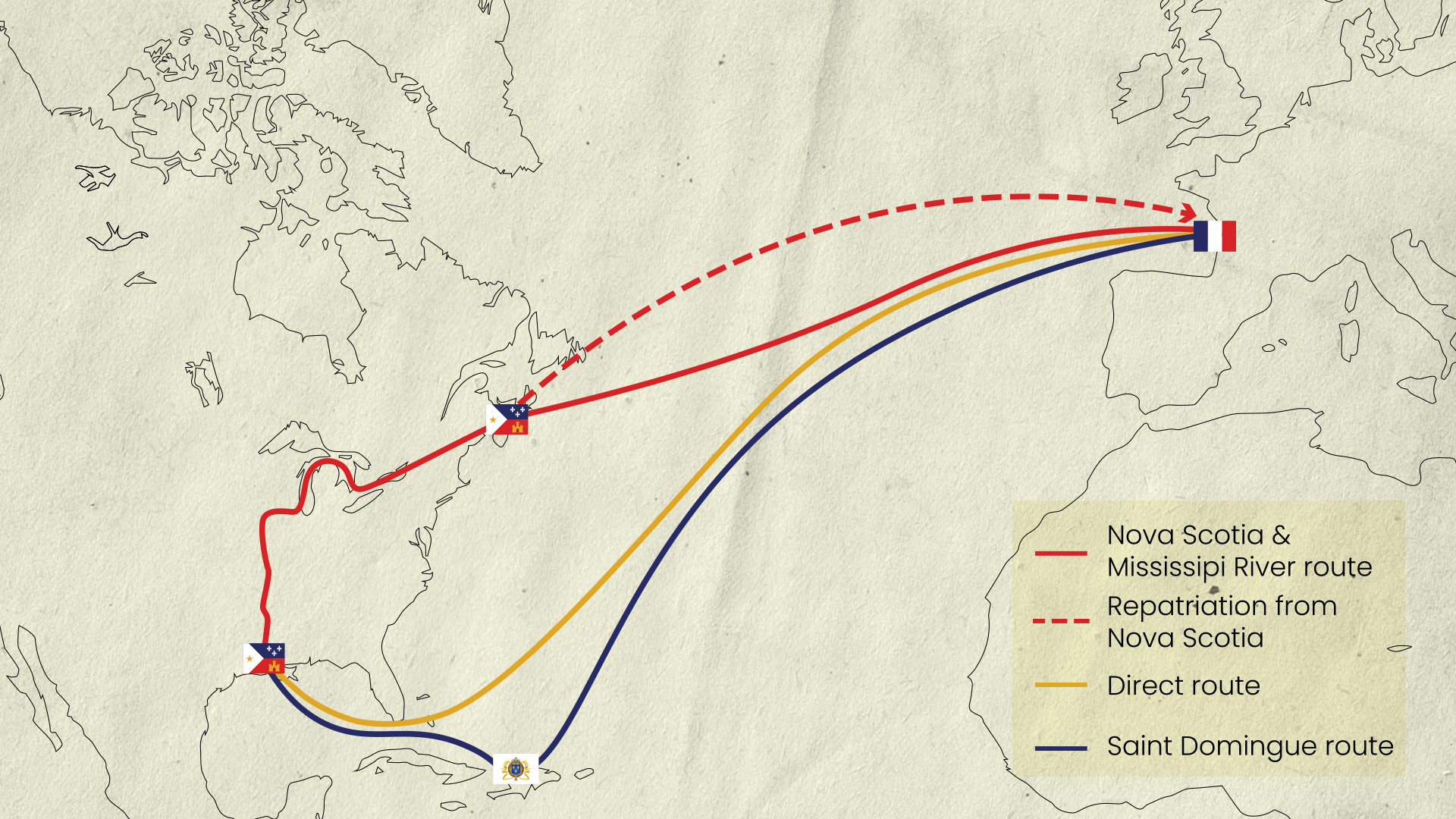Regardless of British
colonial aggression in the region, Nova Scotia still remained a popular
stopping point for many people immigrating from France in the latter half of the 18th century.
Whether it was making their way
back after a lackluster repatriation into French society or escaping France
from the growing conflicts leading up to and during the French Revolution,
Nova Scotia became a gateway for French refugees, exiles, and immigrants.
From here it was very common for French travelers to make their way over
to the Mississippi River via the Great Lakes or American Midwest. This was the route that Louis
Chachere would have taken to Southern Louisiana.
Many French people were repatriated back to France during this time from
Nova Scotia because of the British expulsion campaigns. A great deal of these
repatriated citizens couldn’t find their place in their home country, and
eventually decided to journey back to North America, taking a more
direct route accross the Atlantic Ocean seeking Southern Louisiana.
Lastly, many travelers made stops in St. Domingue, now Haiti,
on their way to Southern Louisiana. Southern Louisiana and some
surrounding pockets would go on to be identified as Acadiana.



